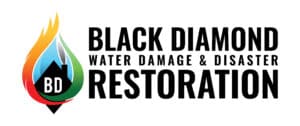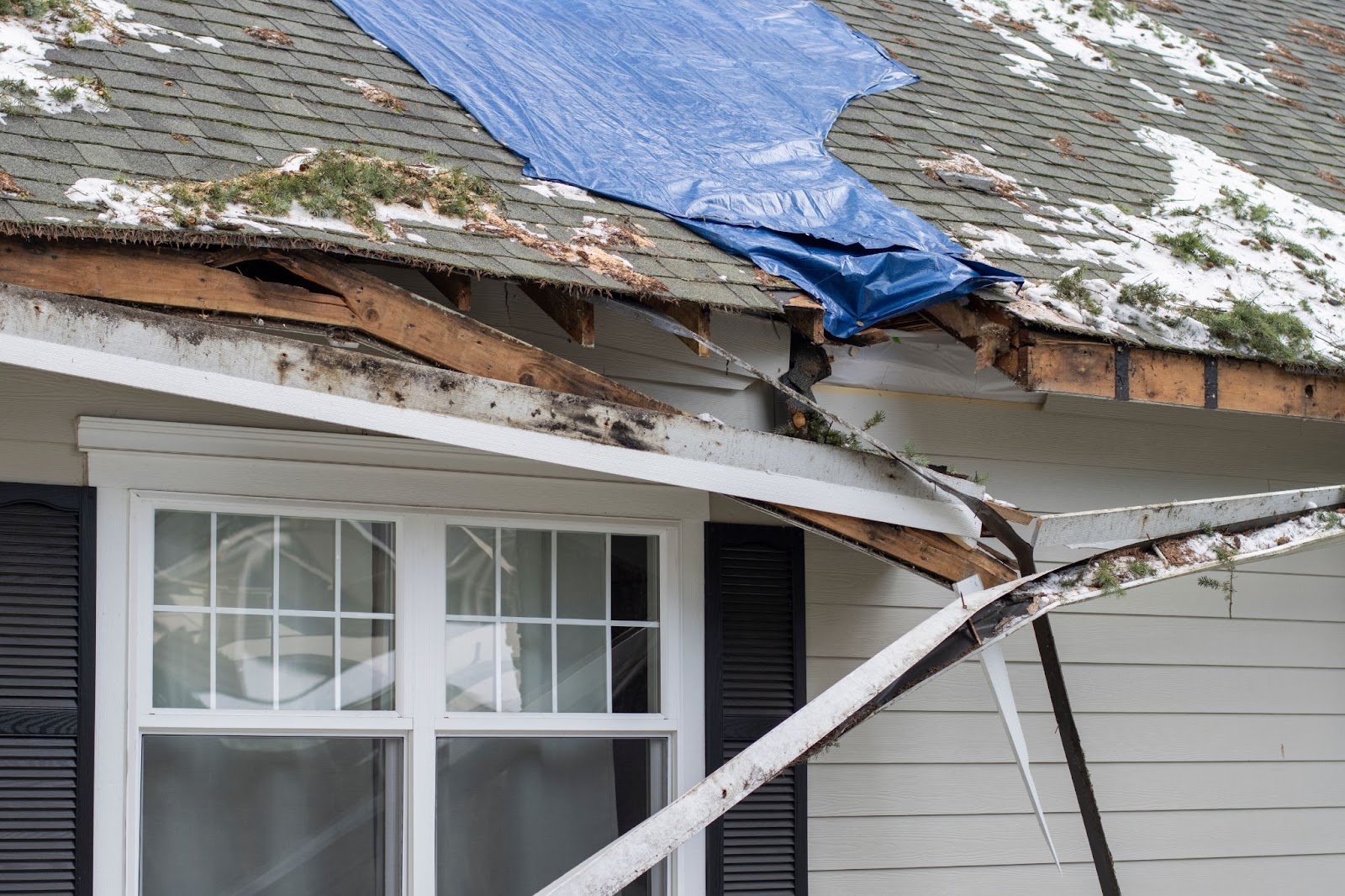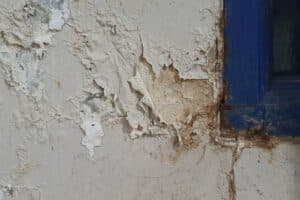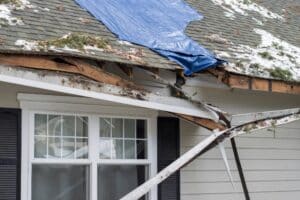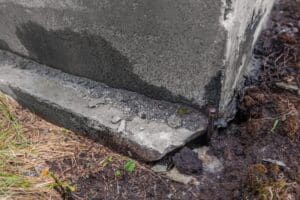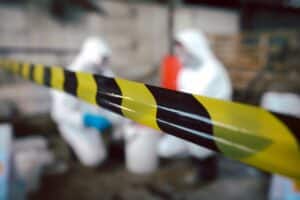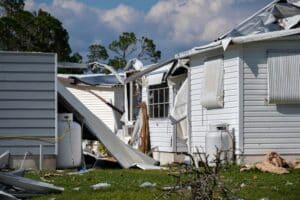When the skies clear after a severe storm or natural disaster, the daunting landscape left behind requires immediate cleanup and total restoration.
Broken windows, flooded basements, and scattered debris mark the scene left by severe storms. This scene creates a sense of urgency, but how do you know where to start? No matter the type of storm, the path to recovery begins with clear, decisive action.
This blog will walk you through the critical steps for storm damage restoration. Learn what to do in those first few moments and beyond to help you restore safety, mitigate further damage, and reclaim a sense of normalcy as quickly as possible.
1. Stay inside until the storm has completely passed
Your safety is the top priority during any storm. Stay inside until the storm has completely passed to protect yourself from the myriad of potential dangers lurking outside. High winds can uproot trees and send objects hurling through the air, while heavy rain quickly escalates into treacherous floods.
Listen to weather alerts and wait until local authorities give the “all-clear” signal. Waiting for this makes all the difference between safety and disaster. Enjoying the calm after the storm is much more comforting when you know you have taken every precaution to protect your well-being first.
2. If you evacuated, stay put until local officials say it’s safe to return
Even after the storm passes and the skies clear, stay put until officials give the all-clear. Returning to your home too soon exposes you to lingering threats such as electrical hazards, residual flooding, and weakened structures that could collapse without warning.
It’s crucial to wait for official confirmation from local authorities that it’s safe to venture outside again. Authorities will assess and manage risks to verify that your home and neighborhood are secure before you go back. This is the best way to protect yourself and allow emergency services to execute their duties without additional complications.
3. Conduct an initial assessment and document the damage
Once it’s safe to venture outside again, your first step should be conducting an initial assessment of the storm damage. Carefully walk around your property, looking for obvious signs like broken windows, roof problems, fallen trees, and water damage. Be mindful of potential hazards such as downed power lines, sharp debris, and unstable structures as you make your assessment.
Approach this task methodically and take note of both major and minor damages. If you notice anything dangerous or beyond your ability to handle, it’s best to wait for professional storm damage home repair to arrive. Your safety is still a top priority, even after the storm has subsided.
Document everything thoroughly during your assessment. Take clear photos and videos of the affected areas from multiple angles. This visual evidence will be crucial when filing insurance claims and pursuing repairs with a storm damage restoration company. The more detailed your records, the smoother the restoration process will be.
4. Contact your insurance company
Next, notify your insurance company as soon as possible to report the devastation and file a claim. Give them any documentation you have collected and follow their instructions carefully. Your insurance adjuster might need to visit your property for a firsthand evaluation before executing the claim.
Knowing your insurance policy is crucial at this stage. Familiarize yourself with what is covered, the deductible amount, and any specific measures you need to follow. Keep a record of all communications with your insurance company, including emails, phone calls, texts, etc.
5. Secure your property
At this point, the last thing you want is further damage and more problems to tackle. To prevent this and ensure your safety, take the following immediate steps to secure your property:
- Tarp damaged roofs to prevent water leakage
- Board up any broken windows and doors
- Remove debris from driveways, walkways, and entrances
- Turn off all utilities (electricity, gas, water) if there’s a risk of leaks or electrical hazards
- Remove as much standing water as possible from your home
- Discard any items that can’t be properly cleaned and sanitized
Temporary storm damage home repair measures may help mitigate additional issues until storm damage restoration services arrive. However, avoid making any permanent repairs until your insurance adjuster has assessed the situation, as this might affect your claim.
6. Contact your family or friends outside the area
One of the more pressing steps to take after a storm is to contact your family and friends. Let them know that you’re okay, so they will help spread the word. Texts or communicating via social media are more reliable forms of communication than phone calls when power lines are compromised.
7. Stay tuned to local media and emergency officials
Stay informed through local media and emergency officials in the aftermath of a storm. Local news channels, radio stations, and official social media accounts provide up-to-date information about ongoing recovery efforts, safety advisories, and potential hazards in your area.
These updates include important details such as road closures, availability of emergency shelters, and locations for essential supplies. Staying in touch with these sources helps you stay aware of any new developments that could impact your safety and recovery.
8. Practice food safety
Food safety is a vital concern in the wake of a storm. Power outages cause refrigerators to lose their cooling ability and spoil perishable items.
Start by checking the temperature inside your refrigerator and freezer; if they have been above 40°F for more than two hours, the food is not safe to consume. When in doubt, it’s better to err on the side of caution and throw it out to avoid the risk of foodborne illness.
Exercise caution with any food that has encountered floodwaters, as it’s likely contaminated. Sealed, airtight containers might be salvageable if thoroughly cleaned and disinfected. On the other hand, most food in porous packaging, like cardboard, should be discarded.
Boil water if you suspect contamination and only eat canned or packaged foods that have remained sealed and unspoiled. Practicing diligent food safety helps protect your health and keeps you well-nourished during the recovery period.
9. Prepare for road closures and extended power outages
Road closures and extended power outages are common challenges post-storm that require careful preparation. Fallen trees, downed power lines, flooding, and other obstructions make roads completely impassible. Check local news or social media updates to stay informed about road conditions and closures. Plan alternative routes and allow extra travel time whenever possible.
Since power outages significantly impact daily life, it’s essential to be prepared. Stock up on non-perishable foods, bottled water, and medications. Flashlights and batteries help you stay informed and navigate safely in the dark. If you have a generator, make sure it’s installed correctly and used safely to avoid carbon monoxide poisoning.
10. Exercise caution when cleaning up and making small repairs
It’s natural to want to dive into cleanup and repairs after a storm, but remember safety first! Wear appropriate protective gear such as gloves, sturdy boots, long sleeves, and safety goggles to protect yourself from hazards. Be mindful of your surroundings — unstable structures and strewn debris pack their own set of risks.
Always prioritize safety over speed when making small repairs. Use proper tools and techniques, and never attempt to fix anything you’re not well-versed in. For instance, if your roof is destroyed, climbing up yourself can be deadly; instead, secure the area and call a professional.
11. Begin restoration and repairs
When it’s time to begin the cleanup and total restoration process, hire only licensed professionals to guarantee the job is done safely and correctly. These experts have the necessary skills and experience required for effective storm damage home repair.
Before hiring anyone, verify their credentials, check references, and read reviews to make sure they have a solid reputation. Beware of scams that often surface after major storms, like fraudulent contractors offering quick, cheap fixes. These “fixes” just turn into more problems in the long run.
Always request written estimates, avoid paying in full upfront, and trust your instincts if something feels off. Taking these precautions will help you avoid further complications and ensure your home is restored to its full comfort level safely and efficiently.
Black Diamond Restoration is your go-to for storm damage restoration
If you’re in need of cleanup and total restoration after a storm, the experts at Black Diamond Water Damage & Disaster Restoration have you covered. With our comprehensive services and experienced team, trust us to restore your home quickly and efficiently.
We work tirelessly to take care of all types of damages, including any and all damage from severe storms. Rest assured that our licensed professionals will help restore your home or commercial space to the best standards.Contact Black Diamond Water Damage & Disaster Restoration today for all your storm damage restoration needs. With over twenty years of disaster restoration experience, you can trust us to get the job done right!
toto slot